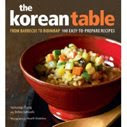TOKYO -- Spa LaQua is a contemporary take on one of Japan's national treasures: the "onsen," natural hot springs that bubble up from deep inside the earth. Such resorts are a popular destination for Japanese and are found from north to south on the archipelago.
Spa LaQua's saltwater springs come from about 5,500 feet below and contain minerals said to be good for your skin, arthritis, and muscle fatigue. Located in the happening Tokyo Dome complex, Spa LaQua (pronounced la-koo-wa) takes up several of the top floors.
As I enter the spa, I place my shoes in a cubby. At the reception desk I am issued a Lucite bar and a wristlet with a digital code. I'll use this for any purchases or treatments, including massages, food, and drink. It is also my locker number. This cashless system makes it easy to spend money -- one pays on the way out.
As I enter the dressing rooms I have a choice of three types of stylish spa-issued jammies and get a net bag with towels. (At a traditional onsen , guests receive a cotton kimono called a "yukata.") I wave my wrist in front of the locker scanner and it opens. Then all I have to do is leave my clothes and inhibitions behind.
The locker rooms and bath areas are segregated by sex. Bathing in an onsen or public bath is a communal affair. Although everyone is naked it is very modest. All I am wearing now is my wristband. I bring that rectangular piece of white cloth they call a towel with me as I take to the waters.
Knowing the proper etiquette for bathing in Japan will put you and your fellow bathers at ease. I overheard one group of foreign guests say they had brought their bathing suits because they didn't know what to expect. You will be more conspicuous if you are wearing your bathing suit instead of your birthday suit. Their suits were left in the lockers.
That little towel is important. First, you can drape it modestly in front of you. Second, it is used for washing, which is what patrons do before they go near the deliciously warm pools of water. I walk through the doors into a huge area of knee-high three-walled cubicles. Each has a spigot, bucket, soap, shampoo, and conditioner. I scrub and rinse until clean. In the women's area there is usually lots of chatter. After washing I have several choices. The indoor shallow saltwater pool is pleasantly hot and usually the first stop. Women are submerged to their shoulders. The white towels are now folded in neat little squares and top their heads or wrap their hair.
Now for the dry and wet sauna options. The dry sauna has a huge TV. I was in there when a comedy show was on and everyone was giggling and sweating. Then there is a cold pool to immerse in. My husband told me to just get in and count to 11: I'd either be dead from the shock or have gotten used to it. The wet sauna has a natural amethyst-colored rock spotlighted as vapors swirl about it. In the water massage section bathers sit submerged to their necks and move from station to station, with water jets perfectly positioned to hit targeted body areas.
Then comes the body cleanse treatment , for which you make an appointment using the telephone on the wall. This could be daunting if you don't speak Japanese, but a staff member or a fellow bather will help. There are several rubber-matted tables and some deceptively dainty-looking women waiting to scrub and slough off dead skin. There are several "courses" to choose from. I choose the half-body back scrub for 15 minutes and about $20. I could have sworn the person was wearing gloves made from Brillo pads.
I head out to the "rotemburo," or outdoor pool, enclosed by high fences and greenery. There is a wooden arbor over the stone pools. The cold January air feels good as I sink into the natural pool, look up into the winter night, and see a perfect half moon. Suddenly I hear a rumble of a roller coaster as it ascends just above us. Then the happy, hysterical screams of those crazy riders as it descends. I think, I am in the buff, outside in the center of Tokyo, in the middle of winter, in hot water with a bunch of strangers, with a gazillion tons of metal whooshing above me. Who's nuts?
I head back to the locker room and put on my jammies and pad out in bare feet to meet my husband in the "relax lounge" -- a huge room with dozens of the cushiest recliners. Each chair is equipped with a TV screen and a phone for chair-side service (beginning at 6 p.m.) for beer, sake, lemonade, or a snack. Or you can walk up to the snack bar. Just wave the wristlet and your selection is added to your tab. The freshly squeezed grapefruit juice hit the spot.
It is quiet in the room except for the occasional snore coming from under a blanket. A huge wall of windows looks out onto the roller coaster. After an hour or so we head to a restaurant just down the hall. Dress code: PJs. The choice is between a contemporary Japanese or a Korean BBQ restaurant. We have eaten at the Japanese restaurant several times and have been happy with cold beers, creative salads, and small plates of grilled fish, sashimi, and "yakitori" (grilled chicken on a skewer). There are lots of options and pictures on the menu. I flash my wristlet again. It's addictive.
The spa offers 11 beauty/massage options, including facials, hair and nail salons, foot massage, head massage, Hawaiian and Thai massages, reflexology, and color therapy. Courses range from 20 to 100 minutes. Prices are prominently posted, but a translation may be needed.
I pass the gift shop and purchase candy in a tin box. Swoosh, swipe that band. My husband and I separate for a final soaking. The women's changing room is outfitted with so many amenities I want to try them all. There are rows of counters with mirrors, hair dryers, and every type of face product for free. There are baskets with disposable toothbrushes with the paste already on. Forgot your hairbrush? No problem-- reach for a sanitized brush. There is even a vending machine with personal items like razors and underwear.
When you check out you discover what all that swiping cost. Sticking to just the bath and relax lounge with no extras the fee is about $23. The extras do add up but not prohibitively. One entry fee with a meal and a few beers is about $75.
So if you are heading to a Japanese onsen, the only word you will really need to know is "ahhhhhh."
Jaffa/Yafo at Dusk
13 years ago



